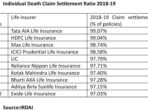Insurance Treaty Meaning – Reinsure, which is often called insurance companies, is a contract between the reinsurer and the insurer. In this contract, an insurance company – known as the accused party or cedent – shows part of its insured risks for reinsurance society. The reinsurance company accepts or more insurance policies issued by the party.
Reinsure enables insurers to remain a solvent by repairing some or all amounts to the applicants. Reinsure reduces net responsibility for individual risks and protection of disasters from large or more losses.
Insurance Treaty Meaning

Practice also offers rejection of companies seeking reinsurance, a chance to increase their insurance capabilities in the number and size of the risk. Ceding -companies are insurance companies that are risk of risk to another insurer.
Obligatory Reinsurance: Meaning, Types, Pros And Cons
Covering the insurer from mandatory obligations, reinsurance gives the insurer greater security for his capital and solvency through his ability to withstand a financial burden when unusual, the main events occur.
Through reinsurance, insurers can support policy for higher amounts or volumes of risk without increasing administrative costs to cover their solvency margin. In addition, reinsurance makes a significant liquid property available for insurers in case of exceptional losses.
The optional blanket protects the insurer for a person or a particular risk or contract. If different risks or reinsurance contracts need, they will be transmitted separately. The reinsurer has all the rights to accept or refuse an optional proposal for reinsure.
The reinsurance contract is intended for a fixed period instead of risk or contract. The reinsurer covers all or part of the risk that the insurer may start.
Reinsurance Definition, Types, And How It Works
Under proportional reinsurance, the reinsurer receives a proportionate proportion of all premiums of policies that sells the insurer. For the claim, the reinsurer has part of the losses based on the previously transferred percentage. The reinsurer also compensates the insurer for the cost of processing, acquiring business and writing.
With disproportionate reinsurance, the reinsurer is responsible if the losses of the insurer exceed a certain amount, known as the border of priority or retaining.
In the case of improper reinsurance, the reinsurer does not have a proportional share in the premiums and losses of the insurer. The restriction of priority or retaining is based on one type of risk or the complete risk category.

Excessive loss of reinsurance is a type of disproportionate coverage in which the reinsurer covers losses that cover the retained limit or contract for the excess of the insurer’s share. This contract usually refers to catastrophic events and covers the insurer on the basis of a settlement or to cumulative losses in a particular period.
Reinsurance Assisted Placement: Meaning, Types, Example
Under the reinsurance of risk, all the claims that have been determined during the effective period are covered, regardless of whether the losses have taken place outside the covering period. No cover for requirements coming outside the covering period, even if the losses occurred while the contract was in force.
Reinsure is a polis of insurance for insurance companies. This is a way of transferring some financial risks that insurance companies take over when providing cars, houses, people and companies to another company, a reinsurer. The contracts between companies that misdemeanor and reinsurers are complex and may include a decrease in the provisions in case one side becomes unsolve.
Different usual reasons that insurers receive reinsurance include: expansion of the insurance company capacity, stabilizing insurance results, financing, gaining disaster protection, distribution of risk of insurer and acquiring expertise.
Reinsure has two basic categories: contract and optional. Contracts are agreements that cover wide groups of policy rules, as well as all car company from the primary insurer. The optional includes specific individual, generally high quality or dangerous risks, such as a hospital that would not be acceptable to the contract.
5-star Marine 2022
Reinsure, often called “Insurance Societies,” is the result of a contract between a reinsurer and an insurer. It transmitting an insurance company – known as a party for insult or cedent – some of its insured risks for a reinsurance company. As a result, the Society of Reinsure for Some or all insurance policies has issued an indictment party after transmission of risk reinsurance for another company to reduce the opportunity to be exposed to a large payment for one or more requests.
Requires writers to use primary sources to support their work. They include white works, government data, original reporting and interviews with experts in the industry. We also refer to the original research of other well -known publishers where it is necessary. You can find out more about the standards we follow when creating accurate, impartial content in our editorial policy. Under belief is the basic aspect of the insurance sector, and thus insurers offer a risk transfer mechanism and protection against potential losses. The convention reinsure is a kind of reinsurance agreement that covers a certain range of risks over a particular period. This is a contract agreement between the insurer and the reinsurer, where the reinsurer agrees to take over part of the insurer’s risk in exchange for premium. The reinsure of the contract can be divided into two main types: proportional and disproportionate covering.
Proportional coverage is a kind of reinsurance of the contract when the reinsurer agrees to share the risk with the insurer based on a predetermined percentage. In this type of blanket, the reinsurer agrees to pay the part of each request the insurer receives. The proportional coverage is further divided into two subspecies: the share of quota and excess reinsurance.

Reinsure for the quota shares is a kind of proportionate cover in which the reinsurer agrees to take over the fixed percentage of the insurer risk. For example, if the insurer has a reinsurance contract for the share of quotas by 50%, the reinsurer pays 50% of each request the insurer receives. This type of reinsurance provider often use to reduce risk exposure.
The Terrorism Pool
Excess reinsurance is a kind of proportionate covering in which the reinsurer agrees to take over part of the insurer risk above a predetermined amount. For example, if the insurer has an excess of reinsure for a million dollars, the reinsurer pays the demands of above $ 1 million. This type of reinsurance is often used by insurers to protect against catastrophic losses.
The disproportionate coverage is a kind of reinsurance of the contract when the reinsurer agrees to pay a fixed amount for any request the insurer receives, to a predetermined limit. Non -prostorial coverage is further divided into two subspecies: excess loss and stop loss of re -insurance.
Re -insurance of excess loss is a kind of disproportionate cover to which the reinsurer agrees to pay for requirements that exceed the predetermined limit. For example, if the insurer has an excess of re -insurance contract for $ 1 million, the reinsurer will pay more than $ 1 million in claims. This type of reinsurance is often used by insurers to protect against major losses.
Reinsure for stopping losses is a kind of disproportionate coverage in which the reinsurer agrees to pay requirements that exceed the predetermined aggregated limit. For example, if the insurer has a loss stop for $ 10 million, the reinsurer will pay for more than $ 10 million in total. Insurers often use this type of reinsurance to protect against a series of losses that can occur in a particular period.
Zurich Adds $300m Top Cat Layer For Europe To 2024 Reinsurance Arrangements
Insurers generally use proportional coverage to reduce risk exposure, while non -prostorial coverage is used to protect against catastrophic losses. The proportional coverage is more predictable and more stable, while the non -prostorial coverage is more flexible and can provide greater protection against major losses. Ultimately, the best option for the insurer depends on their specific needs and risk profile.
Convenience reinsure is an essential tool for insurers to manage risks and protection against potential losses. The proportional and unproportionate coverage are the two most important types of reinsurance of the contract, each with their own advantages and disadvantages. The insight into the differences between these two types of coverage is crucial for insurers to make informed decisions on their reinsurance strategy.
The proportionate reinsurance of the contract is a kind of cover in which the reinsurer and cedent share the risk of politics in advance. This type of reinsurance is also known as pro-Rata reinsurance and is often used in the insurance sector for real estate policies and victims. The proportion of the risk divided between Cedent and Reinsurer is based on a predetermined percentage and applies to all the losses that belong to politics. In this part, we will investigate various aspects of reinsurance of a proportional contract.
In the reinsurance of proportional contracts, the reinsurer agrees that it includes a certain percentage of the risk of politics, and Cedent retains the remaining percentage. For example, if the reinsurer agrees to include 50% risk, it pays 50% of the premium and is responsible for 50% of the losses performed by the cedent. Cedent, on the other hand, retains the other 50% risk and pays 50% of the premium. The share of common risk between Cedent and Reinsurer is established and applies to all the losses that belong to politics.
Treaty Reinsurance Exclusions: Understanding Limitations And Restrictions
One of the most important benefits of reinsurance of a proportionate contract is that it offers a stable source of reinsurer income. Since the share of common risk between Cedent and reinsurer is fixed, the reinsurer may accurately predict his income from politics. In addition, reinsurance of proportional tolerance may help Cedent to reduce their exposure to losing risk







